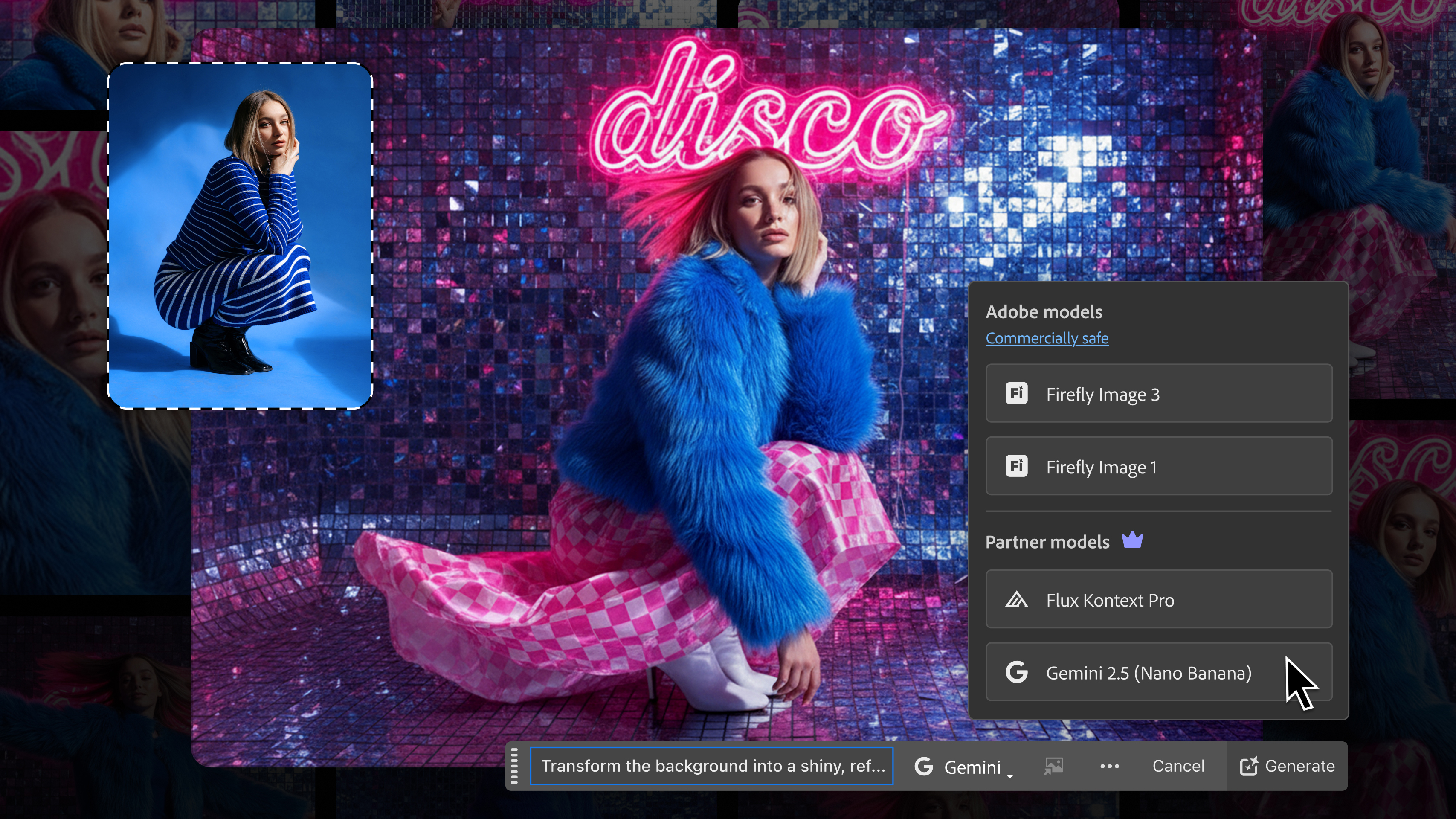Adobe has been posting record-breaking profits. Stock market analysts say it’s not enough. Is bringing more AI models to Creative Cloud Adobe’s new strategy?
Adobe has been posting record-breaking profits, so why have analysts at Morgan Stanley downgraded Adobe's stock rating?

A majority of the recent updates to Adobe’s software from Lightroom and Photoshop to Premiere Pro have focused heavily on generative AI – but stock market analysts are saying Adobe’s push into the AI space isn’t enough.
Despite a string of recent SEC filings with record-breaking profits, Morgan Stanley has downgraded Adobe’s price target from overweight to equal weight. Analyst Keith Weiss wrote that Adobe’s growth in its Digital Media division has “directionality diverge[d] from the pace and quality of the innovation.”
Stock market analysts use the term overweight to recommend that a stock carry more weight in an investment portfolio, predicting positive performance. The equal rate ranking is a downgrade from overweight, which implies analysts expect average performance.
The analysis seems to suggest that analysts think Adobe isn’t keeping up with other AI giants.
Adobe, however, has been posting record-breaking profits. In its last report to investors, Adobe posted record third-quarter revenue, exceeding its original 2025 predictions and raising the end-of-the-year targets. The record-breaking $5.99 billion in the third quarter, however, represents “just” an 11 percent year-over-year growth.
In that report, Adobe indicated that Firefly had “millions of downloads” on the mobile app and that monthly active users on Firefly grew thirty percent from the previous quarter. The report, however, also indicated that the relatively new ability to use other AI models inside of Firefly is growing at a faster rate than Firefly, with consumption of Firefly growing at 32 percent and custom models growing at 68 percent, respectively, in quarter-over-quarter data.
Since that financial report, Adobe has integrated the ability to choose other AI models besides Firefly into the beta version of Photoshop. The move is the first time that Adobe has allowed creatives to use models besides Firefly in a Creative Cloud app, after bringing third-party AI model options to the Firefly app in April.
The best camera deals, reviews, product advice, and unmissable photography news, direct to your inbox!
While Adobe’s business is booming, some analysts think growth in the AI space should be stronger. Google, for example, posted a 14 percent year-over-year increase in the second quarter of 2025, but a 32 percent increase in revenue for Google Cloud, which includes AI infrastructure and generative AI.
One of the key ways that Adobe’s AI differentiates itself is that Firefly is built on licensed content from Adobe Stock as well as public domain content. Adobe says that content generated from Firefly is safe to use commercially. While Adobe’s AI isn’t without its criticism, that’s likely a key distinction for a software giant that caters to many different types of artists, including photographers, videographers, and graphic designers.
As a photographer and Photoshop-Lightroom user, I don’t find a growth of “only” 11 percent concerning. But, I do wonder if stock market pressure could sway Adobe’s future decisions.
Earlier this year, US President Donald Trump claimed that paying copyright owners to use their content was “not doable” if the US wants to remain competitive. I both hope and suspect that Adobe will continue to follow the path of using licensed data to train its Firefly algorithms. Creators are already frustrated enough over Adobe’s subscription model and cancellation policies.
Offering both the commercially safe Firefly alongside other third-party AI models may be Adobe’s strategy for remaining competitive in the AI space without alienating its key user base. Adobe’s recent beta Photoshop update allows creators to choose from different AI models, including Google’s Nano Banana, which is known for its ability to generate images that still look like a specific person.
I watched a demo of the new Photoshop beta capabilities, and it mixes the strengths of different third-party models with longstanding Photoshop favorite tools, including masking and layers. The move appears to bring more control over the final results than generating content inside a chatbot or consumer-focused image editor like Google Photos.
Using the third-party AI capabilities inside Adobe Photoshop won’t require a second subscription to platforms like Gemini, but it is a premium feature that requires a Firefly subscription in addition to a Photoshop subscription, or a subscription to the All Apps plan, after an initial free trial period.
You may also like
Browse the best Photoshop alternatives or the best photo editing software.

With more than a decade of experience writing about cameras and technology, Hillary K. Grigonis leads the US coverage for Digital Camera World. Her work has appeared in Business Insider, Digital Trends, Pocket-lint, Rangefinder, The Phoblographer, and more. Her wedding and portrait photography favors a journalistic style. She’s a former Nikon shooter and a current Fujifilm user, but has tested a wide range of cameras and lenses across multiple brands. Hillary is also a licensed drone pilot.
You must confirm your public display name before commenting
Please logout and then login again, you will then be prompted to enter your display name.
